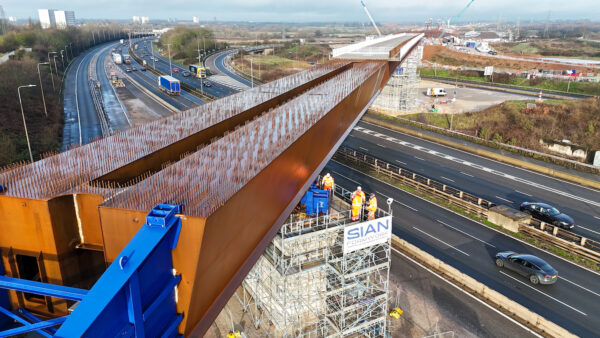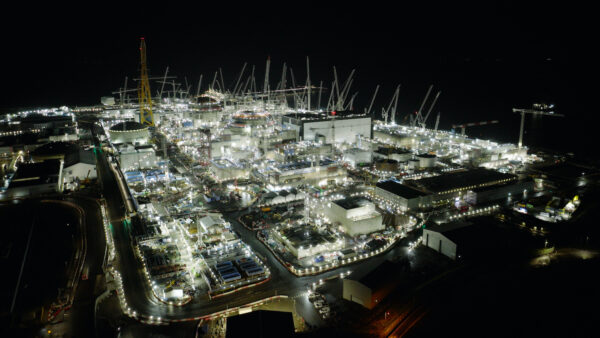Midlands-based contractor G F Tomlinson has removed 15km of scaffold tubing from Nottingham’s Ducal Palace to make way for the next stage of restoration work at the historic site.
The works are part of the £30m redevelopment of Nottingham Castle, funded by the Heritage Lottery fund, D2N2 Local Enterprise Partnership, Nottingham Castle Trust and Nottingham City Council.
G F Tomlinson, which has a history of delivering heritage sector projects across the region, is building a new visitor centre and a extension to the Ducal Palace, where there will be new Robin Hood and Rebellion galleries to celebrate Nottingham’s most famous outlaw.
Works to the palace until this point have involved stripping back and returning the site to its original 1870s state, including the removal of the roof following a number of modifications since the 19th century. The original Ducal Palace building burned down in 1831 and was rebuilt in 1875 and later opened as a gallery in 1878.
To protect the Ducal Palace, the building was covered in a temporary roof and surrounded by freestanding scaffolding around its structure, balanced by water butts. Due to the delicate nature of the project only limited parts of scaffolding were allowed to touch the building, in order to prevent any damage to the masonry.
Loading restrictions were enforced around the site as well, due to the large number of historic caves under the grounds, which has further added to the logistical challenges of the project.
The scaffolding has been progressively removed over the course of eight months, with the northern temporary roof being taken down in June, the southern temporary roof removed in December and the last section located on the Colonnade at the end of January.
How the completed visitor centre and castle are expected to look
The works will also see the castle grounds remodelled and access to the cave network hidden within the castle rock improved. It is expected to attract around 350,000 visitors in its first year.
Richard Oldfield, project manager at G F Tomlinson said: “The removal of the scaffolding marks another major milestone in the redevelopment of Nottingham Castle. This is an iconic yet complex development, so each step forward is a major victory. The temporary works have been key for the overall development – if it was not for the scaffolding and temporary roof, the building would have been at great risk of damage from the weather, so the extensive works have been worthwhile.”
“The Ducal Palace forms a large part of the redevelopment works and G F Tomlinson is proud to be a part of its restoration, taking the historic building back to its original fabric to present it how it was 140 years ago, which is essential to bring the Castle back to its former glory and transform it into a world class visitor centre.”
The scaffolding was supplied and erected in November 2018 by Nottingham-based Empire Scaffolding. The Morton Partnership, the temporary works engineer JPL and Empire Scaffolding all developed the scaffolding and temporary works design over a three-month period.
Claire Kelliher-Smith, financial director at Empire Scaffolding said: “We are proud to be part of this historic restoration and demonstrate the versatility of the Plettac system [developed by Trad], in which Empire Scaffolding has invested heavily in the past 18 months.”










